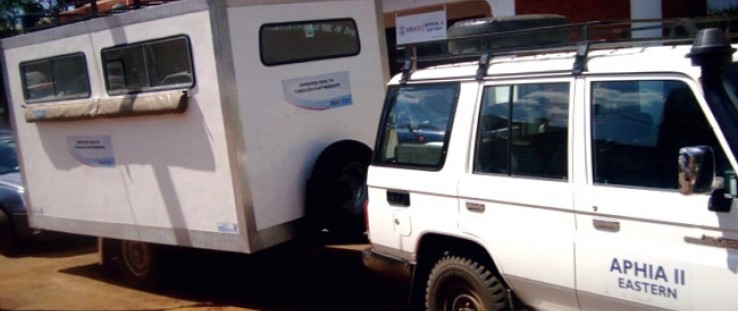 The health wagon is a mini-clinic on wheels.
USAID
The health wagon is a mini-clinic on wheels.
USAID
 The health wagon is a mini-clinic on wheels.
USAID
The health wagon is a mini-clinic on wheels.
USAID
It’s early morning at Mwala Clinic in Kenya’s Eastern province, and everywhere women and babies are crowded onto wobbly wooden benches. Mothers coddle and soothe infants, rearranging colorful blankets and knit caps, while toddlers lean against their moms’ bright cotton skirts.
Many of these women have traveled dozens of miles to bring their children for vaccinations, and they expect to spend much of the day waiting in this packed room.
Two harried nurses do their best to serve the growing throng until a white four-wheel drive truck pulls up, dragging a boxy trailer behind. A team from Kitui District Hospital arrives with their health clinic on wheels—a one-stop shop of holistic care that affords privacy for patients and a cadre of medical specialists to attend to their individual health concerns.
The “health wagon” is yet another initiative in community health outreach under the AIDS, Population, and Health Integrated Assistance II Program Eastern (A2E), which is funded by USAID and managed by the John Hopkins-affiliated, non-profit health organization Jhpiego in collaboration with five partners and the Government of Kenya.
A2E works among communities in Eastern province to improve and expand both facility-based services and community care for HIV/AIDS, tuberculosis, and malaria. It also helps improve health-worker skills and transport services for patients to neighborhood clinics. The effort fights stigma among those affected by HIV/AIDS.
Still, with trained health workers in short supply and poor road networks plentiful, communities remain underserved. The USAID APHIA II Eastern health wagon was one answer. It was designed to attract and retain as many clients as possible by meeting a range of their health needs in a single visit.
Isolation and Great Expectations
“Because it’s so difficult in Eastern to get to clinics, when patients do come, they expect everything to be done,” explains Dr. Leonard Okoko, the district medical services officer based in Kitui District. “When we refer them to other, even farther, facilities for basic things like family planning, they just don’t go—and they end up having a baby every year.”
To solve the problem, the mobile outreach team visits isolated clinics serving large populations in areas where immunizations and use of family-planning services are weak, he says.
A nutritionist, gynecologists, nurses, a pharmacist, a district public health officer, and A2E team members plan the visits weeks in advance and begin preparing the equipment and mobile pharmacy. They work with local chiefs and community health workers to spread the word about the date of the outreach and the services that will be offered.
When the team arrives at the site, its members set up stations where clients can access the services offered. The client flow is organized such that each one ends up at the appropriate service station. Service booths can be tents or available rooms at market centers, churches, mosques, schools, and other facilities nearby. Experts offer everything from nutrition counseling to HIV testing, to family planning, to solutions for other routine health concerns.
The approach worked well integrating certain services with immunization—such as tuberculosis screening and treatment and antiretroviral treatment—but there was still a gap.
“Family planning was still a problem,” says Dr. Okoko. “These are populations that need long-term methods—IUCDs [intrauterine contraceptive devices] and implants. It’s just not practical for them to be trekking to the clinic every three months for short-term methods. You can only do so much with curtains and tents—these are intimate procedures, and you have to create privacy.”
A Practical Solution, on Four Wheels
But how do you do it effectively and practically? The answer came when Dr. Kenneth Chebet, the A2E project director, spotted a customized insulated truck one day, and noticed who had made it. The company was then hired to manufacture the health wagon.
Dr. Ruth Jahonga, an obstetrician on the A2E team, said the wagon has transformed her work. “First, we have enough space to pack all of the equipment that we need. Second, because the equipment stays in the wagon, we can control inventory and secure our materials much more effectively.”
But the best part, she says, is how it has changed things for the clients. “At first they are very curious, but when they step into the wagon, they just smile. It’s clean and cool and peaceful. I see them relax, and they can share their problems without worrying the whole community will hear them.”
“They can be honest about their sexual activities, and then we can provide appropriate care and counseling,” Dr. Jahonga added. “When they get out they are so happy, and they go and tell their friends who are waiting that it’s so nice—they look forward to going into that wagon.”
A health wagon can make one circuit a week covering two market centers and attending to at least 600 clients—mostly women and children under age 5—at each stop. This amounts to roughly 5,000 clients a month. The health wagon’s regular circuit ensures that families that had been unable to access health services can do so now.
There is one problem with the wagon—there’s only one. Planners are working to secure additional health wagons so each of Kenya’s counties can have one.
“I wish there were five of these for Eastern,” says Dr. Okoko. “If we could have many of them going every day, it would make a real difference. We could take them everywhere—not just to facilities. With the caravans, we could create a clinic anywhere.”







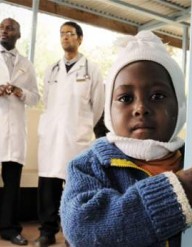

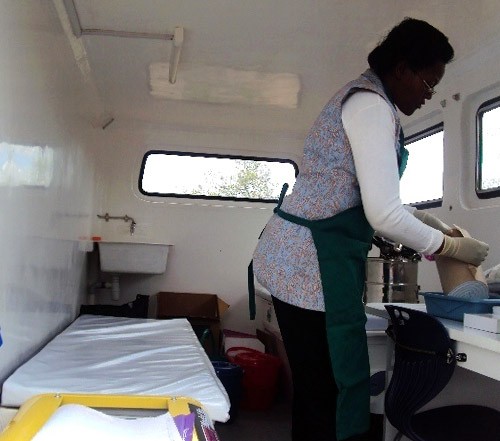
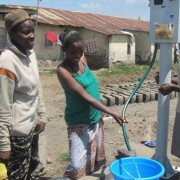
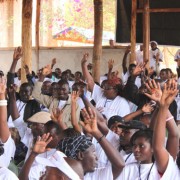
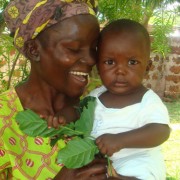
Comment
Make a general inquiry or suggest an improvement.